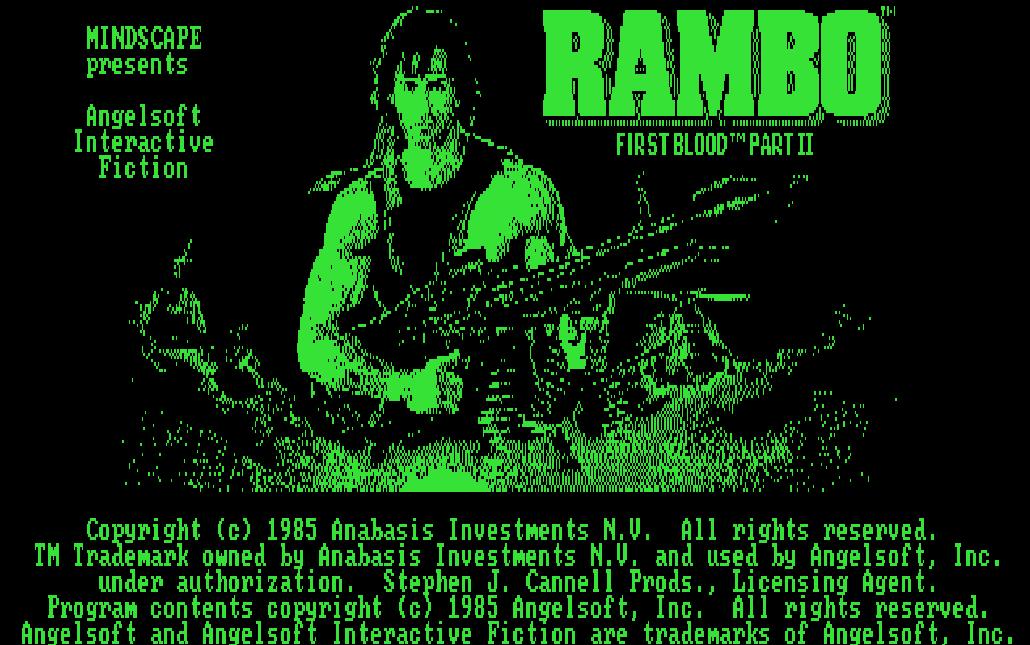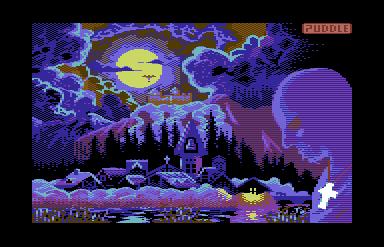The Little Ugly, Evil Guy On My Shoulder’s Verdict:
Well, damn. I was trying to forever extinguish the light and silence the music, but that really ended up backfiring on me. I guess violence really isn’t always the answer.
The Little Nice, Handsome Guy On My Shoulder’s Verdict:
The protagonist is the best sort of hero. He’s someone who selflessly and without regret risks his life for those he serves, most notably his queen, yet receives no credit when he succeeds against all manner of hardship. I like to think my life is lived in a similar sort of way even though I’m terrified of caves and tunnels. If I’m ever needed to cavort with corgis, feast with foreign dignitaries, or give Harry a good spanking, I’m forever at the ready, my queen. Just don’t send me to war or make me go anywhere dark and/or slimy.
My Verdict:
Despite its shortness, Aayela offers a compelling study of darkness, a memorable game world, and a surprisingly emotional story.
Game Information
Game Type: TADS
Author Info: Magnus Olsson is a Swedish text adventure author who was a major force in the IF community in the 1990s. He is a former editor of SPAG. You can visit his homepage — in fact, I really think you should. When is the last time someone wanted to share their public PGP key with you? You need this experience, dammit! He also has an IF page which probably hasn’t been updated since 2004. To be fair, I probably haven’t been updated since 2004 either.
Download Link: http://ifarchive.org/if-archive/games/tads/aayela.gam
Other Games By This Author: Uncle Zebulon’s Will, Atomia Akorny, The Dungeons of Dunjin, Zugzwang
Magnus Olsson’s name may not come up too often in IF circles any more, but Magnus stills looms large in my mind when I think about the history of our hobby. He was a major presence in the IF newsgroups during the 1990s and early 2000s, and I regard him as one of the best thinkers and theorists we’ve ever had. It’s tough to compare him to someone like Andrew Plotkin or Graham Nelson because Magnus only did a few games and perhaps never quite delivered us the magnum opus (magnus opus?) we may have expected. Nonetheless, I truly believe he influenced, encouraged, and challenged many of the best interactive fiction writers ever. We needed a really smart dude who could code and believed text adventures were serious business and truly worth thinking about, not to mention someone who didn’t mind spending time unselfishly mentoring others (or just telling them they were wrong). I personally still feel like he’s going to come back to this hobby any year now, put out some new games, and thoroughly kick all of our asses, but until that happens we should still remember him and everything he did for us. Thanks, Magnus. Thagnus.
Aayela firmly thrusts you into the role of a young knight who serves King Dargon. Queen Dahra, Darg’s favorite lawfully wedded squeeze, is dreadfully sick from some mysterious illness. Out of desperation, the king sends you out on a mission to retrieve a magical item, the Stone of Aayela, that might offer the only possible cure for the queen’s condition. Granted, it also might not really exist, but what sort of adventure would that turn out to be? Your quest lead you to the tunnels beneath the Dark Mountains, which are dark, twisty, narrow, and generally unpleasant. Supposedly, the Stone and the evil wizard who captured a spirit of light inside it are somewhere to be found here, but where?
One of the most interesting aspects of this game is that it takes place mostly in the dark. In other text adventures, darkness is often a problem to be combatted with effective lantern or other light source management or something to be removed by solving a puzzle (find the hidden light switch, learn the illuminating spell). In Aayela, darkness is something inherent to your environment. It can’t be beaten back — you must live with it, cope with it somehow. The darkness affects every aspect of gameplay. You must play by its rules for you are not the master of your domain here. The tunnels are rather large and expansive, but every room feels much the same due to the blackness. They can feel claustrophobic and confusing at times even when Olsson hasn’t stuck us in a maze. There are useful items to find, but you might stumble over them or find them only on a second pass over the same area because it’s just so hard to see anything. Luckily, there are no grues waiting to eat you in the shadows here, but the tunnels don’t feel exactly safe either. The general feeling is one of uneasiness. It’s a primal human thing. We’re afraid of the dark until we’re shamed not to be, and even then unexpected darkness is still alarming. We’ve also been trained by horror movies and other video games that darkness equals danger. Grues, vampires, werewolves, and all the myriad creatures of the night know just when to strike when we’re at our most vulnerable, and I haven’t even mentioned ravers yet. I think part of the reason it took me a long time to find one of the endings to this game is because I wanted to move through the tunnels as quickly as possible to shake the uneasy feeling. That caused me to miss an important item. Of course, it’s also easy to forget to look around when every room is dark, barely described, and looks much the same as any other.
Aayela is a simple, straightforward game to play through. Its puzzles, such that they are, typically only have a couple of reasonable possible solutions and only one of those will make sense in the context of your goal. This isn’t the type of game you’ll likely get stuck playing though one ending is marginally more difficult to reach as I alluded to earlier. You will need to spend some time navigating the tunnels and occasionally double back to trigger the appearance of an item or event. Even there, you’re not really solving a puzzle in a traditional sense…you’re just exploring, just wandering around really. I did feel like there could be more to actually DO in the tunnels. Adventurey type things, you know. Shouldn’t I be dodging falling stalactites, riding stalagmites, dangling from ropes, swinging on ropes, and bashing on dwarves who steal instead of largely just futzing around in the dark? The game does feel a little spare. I think it comes down largely to Magnus’ choice to enshroud most of the game in darkness. That would make doing any of those things I mentioned difficult. Plus, there’s the whole effect where every room in the tunnels feels similar to all the other rooms…you’d lose that vibe if there were more things to interact with. Magnus did it all for the vibes, and I can respect that.
Magnus Olsson is a very good writer and coder, and this is a well-implemented game. This is more than just a dungeon crawler. One important aspect of the plot is that you can communicate with the spirit of light not through language but through music and feeling. This could have turned out rather corny, but Magnus did a terrific job of making it resonate emotionally. Somehow in the midst of all that groping around in the darkness I began caring about and wanting to help the captured spirit; I felt bad when I failed my quest or when I got the ending I regard as less optimal because it didn’t help Aayela. I noticed no bugs, and the parser is solid. I did wish I could communicate more with the evil wizard — I was curious about what his goals were and why he had opted to live in the tunnels with his captured spirit. Were he and his magic behind the queen’s illness? How did he hope to use the spirit’s powers? Was he just another Gollum obsessed with trying to hold on to and in some sick way “protect” his precious? Unfortunately, he proved to be the generally noncommunicative sort of evil wizard and my attempts at conversation largely failed.
Some of the best writing in the game is saved for the endings. There are two paths to victory and both are worth playing. It would be a simplification to call one the good ending and the other the bad ending, but one made me feel a heck of a lot better about myself as it seemed designed to do. On the other hand, the less optimal ending gives you a chance at turning the tables on the wizard which was a nice feeling. One ending could be criticized for assuming too much and denying the possibility of you taking a less extreme, middle path. I personally didn’t mind it because it highlighted a future I regarded as possible albeit one I certainly wouldn’t have chosen for my character. Still, the path it shows my character walking is one many others in history have walked. If nothing else, it demonstrates a realistic danger that always exists when unlimited power is at one person’s fingertips.
Simple Rating: 7/10
Complicated Rating
Story: 7/10
Writing: 7/10
Playability: 7/10
Puzzle Quality: 3/10
Parser Responsiveness: 7/10
Special Ratings For This Game:
Tenebrosity: 9/10 (One point had to be docked because the game starts out in a well-lit area plus the spirit of light is rather bright. Nonetheless, Brother Darkness gives it two bony thumbs up.)



